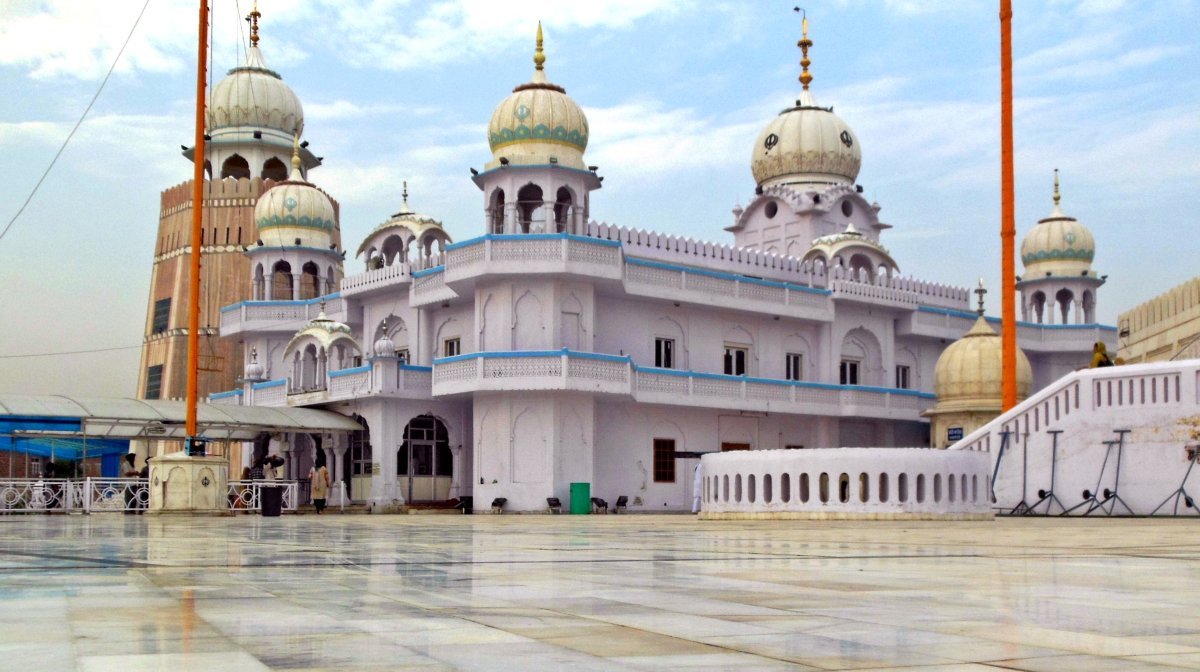
Manager Contact Number: 01655-220236
Address: Talwandi Sabo, Bathinda, Punjab, India
Takht Sri Damdama Sahib (Talwandi Sabo) owes its importance to the literary work of Guru Gobind Singh Ji completed here, during his stay in 1705.
It was at Damdama Sahib that Guru Gobind Singh prepared the revised and authentic version of the Adi Granth into the final edition of Sri Guru Granth Sahib which is now being honored by the Sikhs as Sri Guru Granth Sahib Ji, the Eternal Guru or spiritual guide to all Sikhs.
Sri Guru Gobind Singh stayed at Damdama Sahib for approximately a year and added to the original Sikh scriptures prepared by Guru Arjan Sahib (which contained the teachings of all the previous Sikh Guru's) and the verses of Guru Tegh Bahadur.
The final edition of Sri Guru Granth Sahib written at Damdama Sahib is also known as the 'Damdama Sahib Bir'.
During Guru Gobind Singh's stay a large number of new converts embraced Sikhi and joined the fold of the Khalsa.
Literally, 'Damdama' means a place to have a break and rest. Guru Gobind Singh stayed here after fighting defensive battles against Mughal atrocities.
Before his arrival at Talwandi, two of the Guru's sons were bricked alive at Fatehgarh Sahib and two laid down their lives at Chamkaur Sahib.
After writing Zafarnama, Guru Gobind Singh fought a successful battle at Muktsar and then moved towards Talwandi Sabo.
After leaving the fort of Sri Anandpur Sahib and passing through Chamkur Sahib, Machiwara, Lakhi Jungle and a number of other locations including a battle in Muktsar.
Sri Guru Gobind Singh arrived in Talwandi Sabo on an elevated piece of land. At the place that Guru Ji rested, the location became famous as 'Damdama Sahib'.
From Damdama Sahib, Guru Ji issued orders (Hukamnama) for all Sikh's so was also known as a 'Takht'.
Takht Sri Damdama Sahib, adjoining the Darbar Sahib on the east, marks the site where Guru Gobind Singh held his daily assemblies during his stay.
The present building of the Takht Sri Damdama Sahib, constructed during the 1970s under the supervision of Sant Seva Singh of Sri Keshgarh, is a spacious high-ceilinged hall, with a pavilion, at either end.
The Takht (throne) proper is a 2 metre high square platform lined with white marble and marked off with numerous columns in the southern part of the hail. This is the sanctum sanctorum on which the Guru Granth Sahib is seated. After the evening service the Holy Granth is carried to the old Manji Sahib in a procession of hymn-singing Sikhs.
The interior of the sanctum is decorated with reflecting glass pieces of varying colours set in geometrical and floral designs. Over the sanctum, above the half roof, is a domed square room topped by a tall gold-plated pinnacle and an umbrella-shaped finial, with a khanda at the apex. Octagonal towers at the hall corners have also domed pavilions above them. All these domes are lined with glazed tiles in white, light yellow and light blue colours.